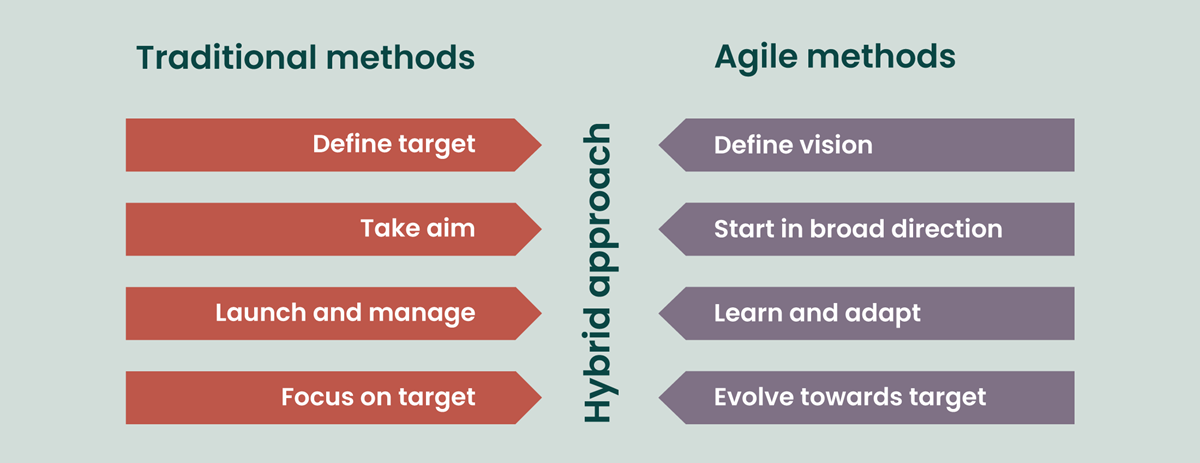
Let’s first start with the very basics, what is scrum? ... Read more.
Agile is a family of development methodologies where requirements and solutions are developed iteratively and incrementally throughout the project life cycle. Agile methods integrate planning with execution, allowing an organisation to create a working mindset that helps a team respond effectively to these changing requirements.
Agile does not prescribe one particular way of working. Rather it provides a framework which describes a collection of tools, structure, culture and discipline to enable a project or programme to embrace changes in requirements.
The agile, or iterative, project promotes collaborative working, especially with the customer. This involves the customer being embedded in the team, providing the team with constant and regular feedback on deliverables and functionality of the end product.
The best agile approaches are very disciplined and can, and should, be integrated into corporate procedures such as governance.
An agile project's defining characteristic is that it produces and delivers work in short bursts (or Sprints) of anything up to a few weeks. These are repeated to refine the working deliverable until it meets the client's requirements.

There are several methodologies that can be used to manage an agile project; three of the most popular being Kanban, Scrum and Lean.
Kanban - a method for managing work, with an emphasis on just-in-time delivery.
Scrum – agile methodology commonly used in software development, where regular team meetings review progress of a single development phase (or Sprint).
Lean – a method of working focused on ‘eliminating waste’ by avoiding anything that does not produce value for the customer.
Where traditional project management will establish a detailed plan and detailed requirements at the start then attempt to follow the plan, agile starts work with a rough idea of what is required and by delivering something in a short period of time, clarifies the requirements as the project progresses.
These frequent iterative processes are a core characteristic of an agile project and, because of this way of working, collaborative relationships are established between stakeholders and the team members delivering the work.

Let’s first start with the very basics, what is scrum? ... Read more.

